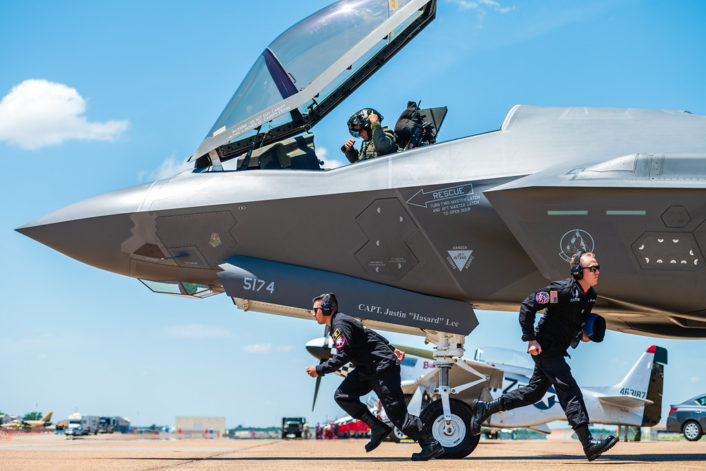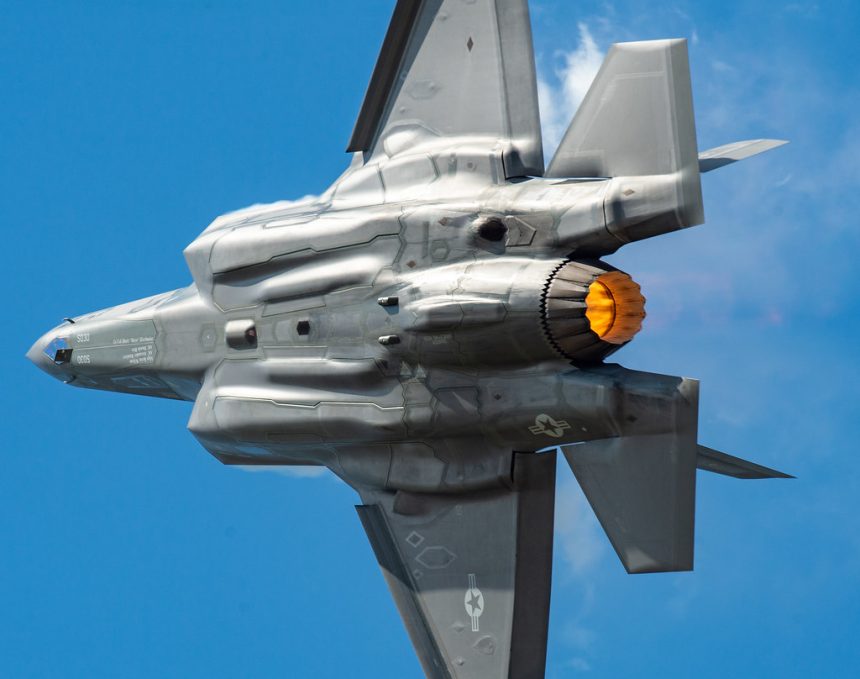Poland to buy the F-35 Lightning II aircraft, becoming first ex-Warsaw Pact member to get the stealth jets.
The US State Department issued a clearance for Poland to acquire the F-35 fifth-generation aircraft in a quantity of 32 examples on Sept. 11. Warsaw would be acquiring the F-35A CTOL (Conventional Take Off and Landing) variant at a price of USD 6.5 billion, according to the announcement made by DSCA (Defense Security Cooperation Agency).
The procurement is aimed at replacing the post-Soviet MiG-29 and Su-22 fleets in the Polish Air Force. Notably, the Fulcrums are still grounded due to the crashes and incidents happening last year, that saw the pilots injured or killed.
The above data would roughly translate into a price of 203M dollars per airframe. One should note that the above is not the final price though. The DSCA notifications are just a reference point for further negotiations. For instance, in case of the Polish procurement of the Patriot missile system, within the framework of the Wisła air defense programme run by Warsaw, the DSCA announcement mentioned the initial amount of USD 10.5 billion. The final agreement was covered with 4.75 billion USD – which is more than 50% less. In case of the Belgian F-35 procurement there was a 44% price reduction. On the other hand, however, the initial Patriot quote was a “full package” that included technology transfer and maintenance facilities hence there was quite some room to reduce the price, and the cuts were made even in the areas as basic LCC (Life Cycle Costing) spares supply in Poland.
The package offered to Poland is not really that expansive, with a single spare engine complementing the 32 airframes to be acquired. This is the main doubt that emerges among the Polish opinion makers. One may be tempted to compare the Polish procurement with the Belgian one here, as both Belgium, and Poland, are placed outside the program. The package for Poland includes, along with the fighters, 33 F-135 engines, C4 and electronic warfare systems, a full mission trainer and access to the fighter’s Autonomic Logistics Information System, with other support capabilities, DefenseNews reports. Poland would be getting the Block 4 aircraft. Belgium, meanwhile, ordered 2 more airframes and 6 more F135 engines. Similarly to Poland they did not acquire armament with the remaining elements of the contract being quite similar.

Three questions may be asked here.
First is, what was that the Belgium resigned from, to cut down the price for their deal by 44%? Second question – what elements could Poland resign from, to cut down the price, as the acquired package is much less expansive than the Belgian one? Moreover, which areas would be a subject to cuts in case of the Polish F-35 deal? Pilot training? Maintenance? Spare parts stock? Thirdly – in case of the Belgian negotiation that was also conducted through a competitive procedure with other fighter aircraft in the equation, was competition a factor that allowed the Belgians to drive the price down? We have noted it in our piece recently, that Poland resigned from a competitive procurement. Therefore, the room for price negotiation may be really limited, as the supplier may not be motivated to drive it down. The information we have unofficially obtained, from a source of high credibility, is that Poland could only hope for cutting the price by 1B USD. This is far from 44% achieved by Belgium.
Cost of procurement is one thing. Life cycle cost would be where the trouble starts. And this goes even further.
Pilot training pricetag is another issue. In case of Norway for instance, it is defined as around 5M USD per pilot. However, the training, in case of Poland, may be cheaper – if Poland decides to send pilots to the US straight after their training on the Polish Air Force’s M-346 Master, designed to train pilots of the 5th generation aircraft.
Another question pertains to the way of financing the procurement that Poland could adopt. Some rumors suggest that a special act of law would be created, outside the MoD normal budgetary arrangements, to fund the acquisition. A similar method was adopted back in the day when Warsaw was purchasing the F-16. However, given that this year ends in 3 months, time may be the most important problem, in preparing such regulation.
Lockheed Martin cooperates with Pratt & Whitney on the F-35. Notably, both these companies are already present in Poland. Nonetheless, as in case of any serious defense procurement, offset negotiation is still expected at a later date. Poland’s industry could potentially participate in the support activities, manufacturing parts for the Polish airframes or for other jets delivered in other parts of the world, said Lockheed’s representative Greg Ulmer, president and general manager for the program, as quoted by DefenseNews.









